I have decided to provide all my content and knitting patterns for free. This means that my income comes from advertisements.
This webiste contains affiliate links meaning that if you buy something after clicking them I may earn a small commission. This does not result in any additional costs to you and the money I get from the yarn sales enables me to use my time to create free content for you. If you decide to purchase I’m really grateful for your support!
This is a universal sock pattern that you can use to knit perfectly fitting vanilla socks of any size and with almost any yarn. No swatching required! It’s possible because I’ve made a collection of interactive patterns that will do the math for you.
The socks you knit with this pattern are worked toe-up. You can select from 4 different toe and heel patterns and mix and match them as you like.
If you dislike ads there’s a pdf-version that is this sock pattern with an afterthought heel and wedge toe. You can find it on my Etsy shop.
With this pattern, you can make a pair of basic socks of any size. You can make them based on your own measurements or this sock size chart for knitting.
This pattern works for any gauge.
Tapestry needle, scissors, sock blockers (optional), stitch markers (optional)
This pattern is written for the magic loop method (for long circular needle) but you and adjust it for the double pointed needles as well.
The pattern guides you through needle selection.
This pattern works for any yarn.
Here you can find a guide for selecting a good quality yarn for your sock knitting project.
Here’s a guide that helps you to buy the right amount of yarn based on your sock size and yarn thickness.
In this section, I explain how to measure your foot (or how to estimate the measurements based on shoe size) and then decide what size socks you should make.
If you are a seasoned sock knitter you can skip this section and go directly to selecting the toe pattern.
If you are not able to measure the circumference or the length of the foot (for instance because you are going to gift the socks) you can use the foot size chart for sock knitting to determine the foot length and average circumference based on shoe size.
Measure your foot circumference: If you are knitting the sock for yourself the first thing you need to do is to measure your foot circumference. Take the measurement around the ball of your foot, which typically is the largest circumference. Do not include a bunion in this measurement. You should be standing when you measure your foot.
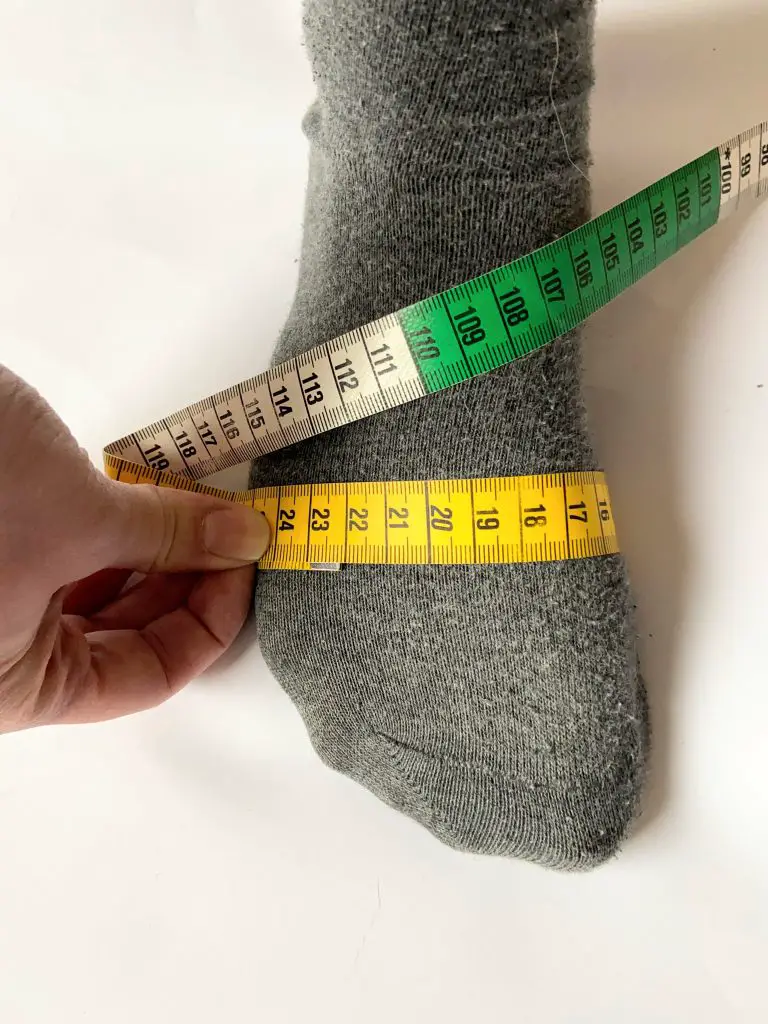
Measure foot length: The next thing is to measure the length of your foot. The easiest way to do this is to place a piece of paper on the ground and then trace around your foot. Make sure that you’re having your full weight on the foot while tracing. If your foot does not fit into one paper, tape two pieces together. Then take your drawing and measure the outline from the back/central part of the heel to the end of the longest toe.
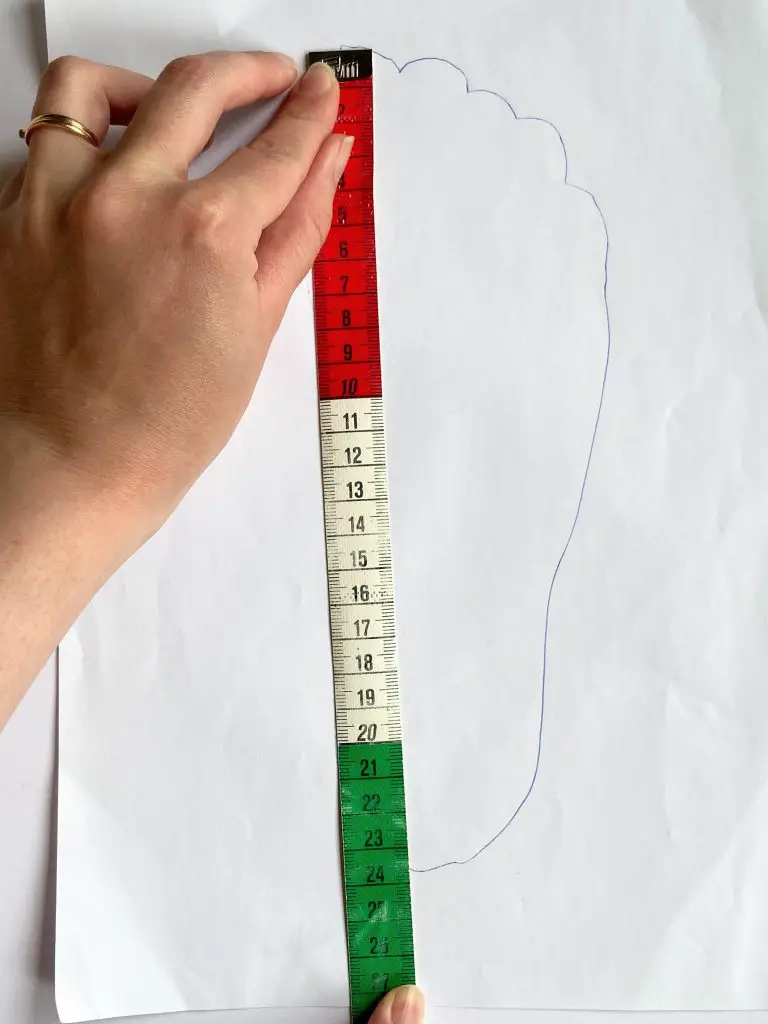
Now that you know the measurements of the foot the sock is going to be knitted for you can calculate the dimensions of your sock.
Plain stockinette or ribbed socks should be worn with a little bit of negative ease meaning that the circumference of your sock should be smaller than the circumference of your foot otherwise the sock won’t stay up on the leg. The rule of thumb here is that the sock should have approximately 10% of negative ease. You get this number by multiplying the circumference of your foot with 0.9. Feel free to use the calculator below.
(″ or cm)
If you want to wear your sock in shoes pick fingering weight yarn (also known as sock weight yarn or 4ply yarn) or if your shoes are loose-fitting you can pick a little bit thicker sport weight yarn. For boot socks select DK or worsted weight yarn. If you are not familiar with yarn weights please see this very helpful guide.
If you are not sure how much yarn you need for your pair read this article: How much yarn do you need for a pair of socks. Because this pattern is a toe-up pattern it is quite easy to optimize the yardage and you can leave the cuff a little bit shorter.

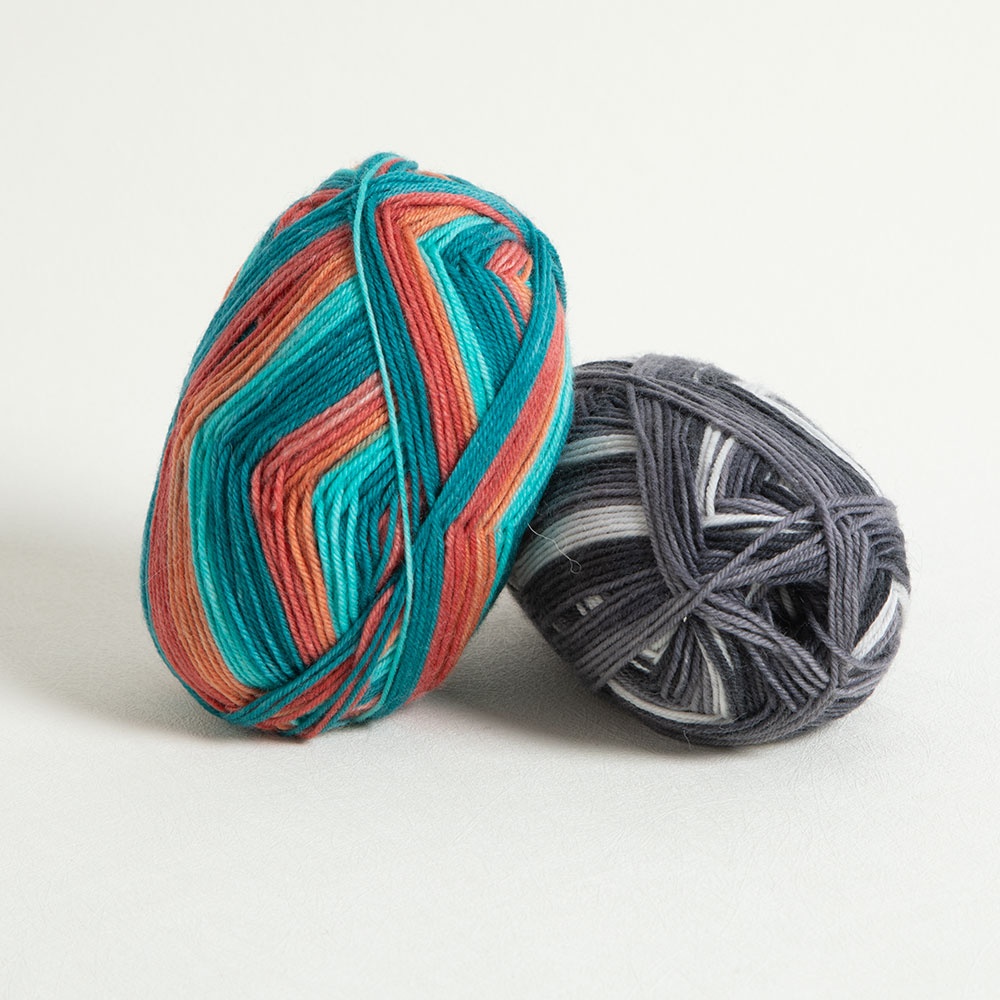
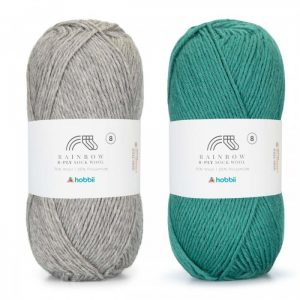
After you have picked your yarn it is time to pick the needles. This pattern is written for the magic loop method (for long circular needle) but you and adjust it for the double pointed needles as well. The important thing here is to find needles that get you a good gauge. If you want to make a lasting sock your fabric needs to be dense enough. The gauge is, however, a matter of taste and you may also knit with a looser gauge if you prefer softer fabric over more long-lasting sock. A good rule of thumb is that the fabric should not be see-through.
If you have trouble choosing the right needles please read this guide.
Usually, fabric knitted with wool also relaxes a bit after you have given it a soak and dry so knit rather with a bit too tight gauge than a bit too loose.
Below you can find the most common gauges socks are knit with. The more there are stitches / 4″ or 10cm the more durable the sock will be.
For instance, I knit my socks with gauges 32 sts (Fingering), 28 sts (DK) and sts 21 (Aran) / 4″ (10cm).
| Yarn weight | Stitches / 4″ (10cm) |
| Fingering | 30-36 |
| Sport | 24-30 |
| DK | 22-28 |
| Worsted | 19-23 |
From the table below you can check the most common needle sizes that are used to knit socks. If you are a loose knitter you should select a smaller needle size than if you are a tight knitter.
For instance, I’m quite a loose knitter so I knit my fingering weight socks with US 0 (2mm) needles and gauge 32 sts / 4″ (10cm), DK weight socks with US 1.5 (2.5mm) and gauge 28 sts / 4″ (10cm) and Aran weight socks with US 2.5 (3mm) and gauge 21 sts / 4″ (10cm).
| Yarn weight | US | mm |
| Fingering | 0-1.5 | 2-2.5 |
| Sport | 1-2.5 | 2.25-3 |
| DK | 1.5-4 | 2.5-3.5 |
| Worsted | 2.5-6 | 3-4 |
I like to make my socks either with plain stockinette or then I use either 3 by 1 or 2 by 2 ribbing on the whole leg and on the instep. The sole I almost always knit with stockinette. I like ribbing because it adapts better to the shape of your foot. For instance, I have quite skinny ankles and ribbed socks aren’t too loose on the ankles unlike plain stockinette socks.
You can of course add cables or colorwork but remember that affects the ease and amount of yarn you need for your socks. If you are looking for some inspiration for stitch patterns see a list of 9 of my favorite knitting stitch dictionaries.
If you are a seasoned sock knitter and you already know what is the total amount of stitches you would like to have for your sock you can select any of the toe patterns below. Otherwise, select the wedge toe or the star toe pattern and keep on increasing according to the instructions until you reach the desired circumference.
The toe here is your swatch.
If you are unsure about the fabric density read again the section 1.3.2 Selecting the needles.
I usually make the toe shaping with stockinette stitch and then I start working ribbing on the instep needle (Needle 1 on the patterns) and I continue working in stockinette on the sole needle (Needle 2 on the patterns).
Now go ahead and select a toe pattern for your sock!
The increases are worked every other round on both sides creating a knit stitch band on each side. This type of toe shaping fits well if all of your toes are almost the same length.
This is probably the easiest toe pattern.
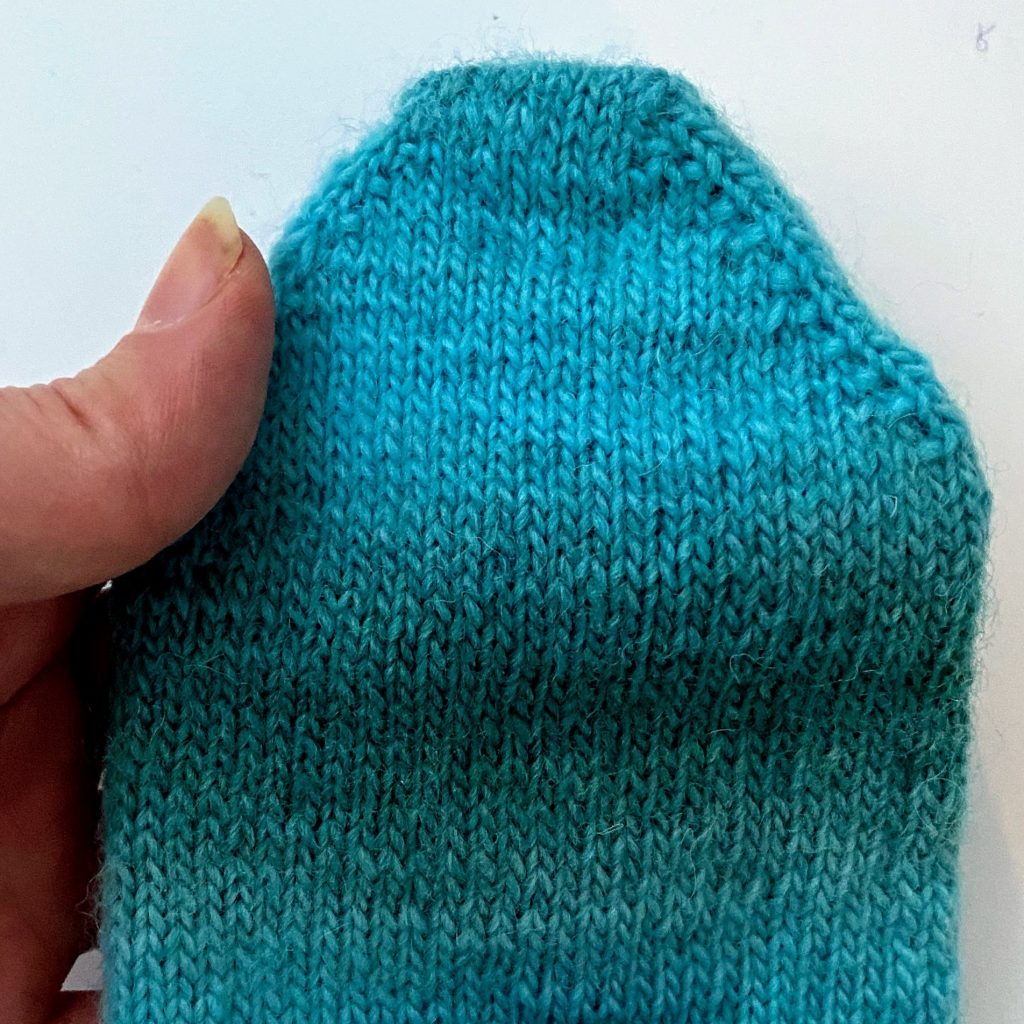
Increases are made evenly in four sections around the sock. Approximately the first half of the increases are made every round and the rest of the increases are worked every other round. Increase lines form a star-like shape.
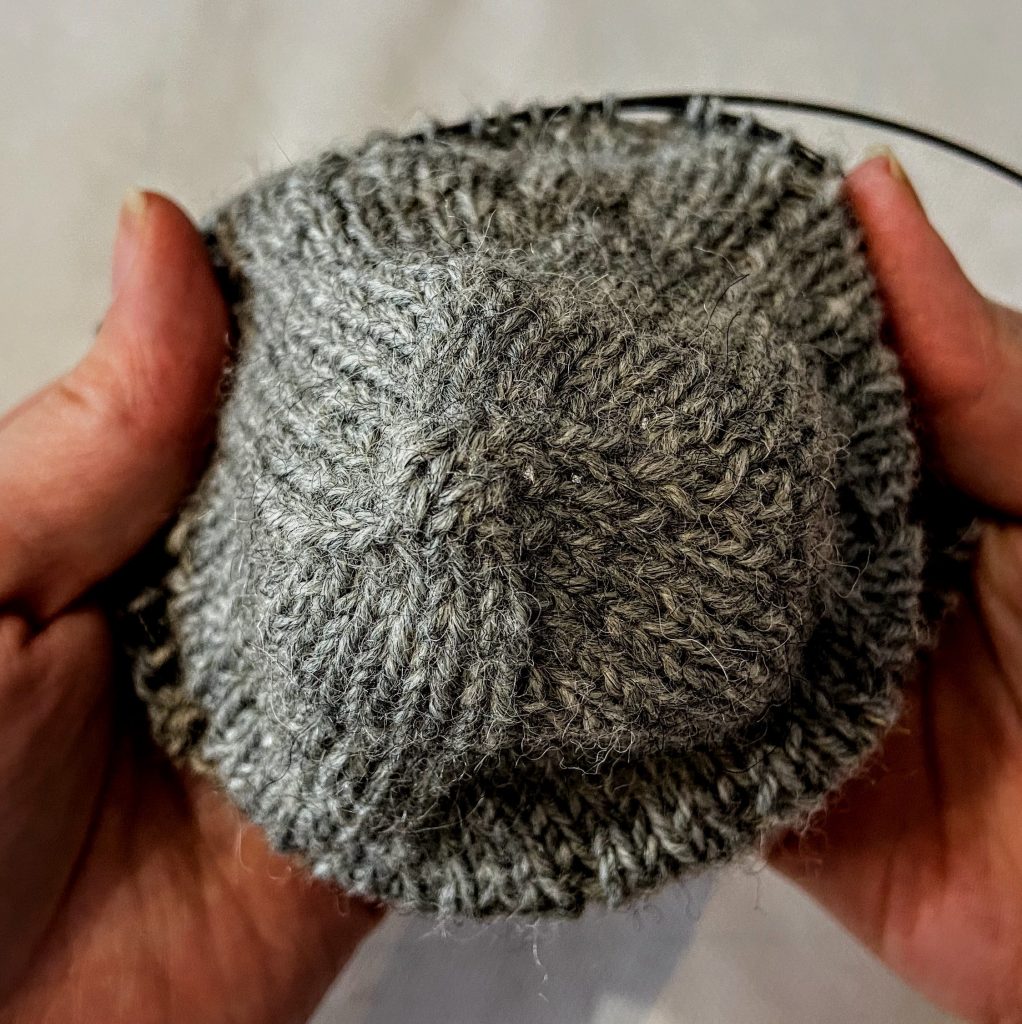
Increases are worked on both sides of the sock creating a knit stitch band on each side. The first half of the increases are made each round while the second half is worked every other round which makes the toe rounder than the wedge toe.
If you don’t know the required number of stitches select wedge toe or star toe pattern.

The increases are distributed evenly around the sock in eight sections. At first you work just a few plain rounds between the increase rounds but the further you work your toe the more plain rounds you work between the increase rounds. This results in a toe shape which is round and there are no increase lines visible.
If you don’t know the required number of stitches select wedge toe or star toe pattern.
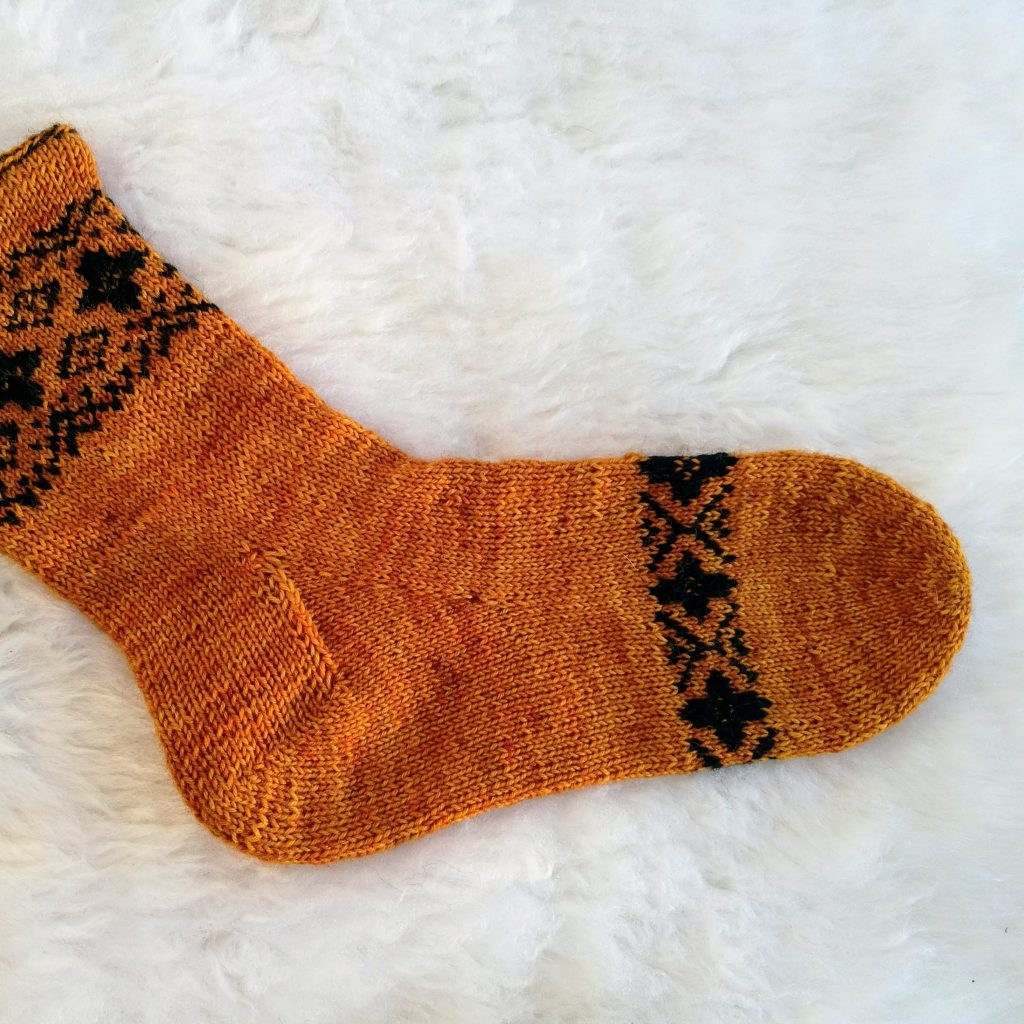
You should now have finished your toe and it’s time to select what kind of heel you would like to make. Now in addition to stitch count, you also need to know your row gauge so measure how many rows per 4″ (10 cm) there are on your sock.
At this point might be that the length of your sock is not yet 4″ (10 cm). If you are making an adult sock work until your sock measures 4″ (10 cm) or measure for instance how many rows you have per 1″ and multiply that number with 4 (rows / 1cm and multiply that number with 10).
The desired length mentioned on the heel patterns refers to the length of your socks foot.
Now go ahead and select a heel pattern for your sock!
For baby socks I recommend the short row or afterthought heel because if your sock is really short might be that you are not able to make all of the required gusset increases before the heel turn and the foot will become longer than intended.
I usually like to knit the three first mentioned heels in stockinette and after finishing the heel I continue in ribbing on both needles.
Short row heel also known as hourglass heel is the one used in most commercial socks. It is symmetrical and you make it exactly the same way regardless if you knit your sock from the toe up or cuff down.
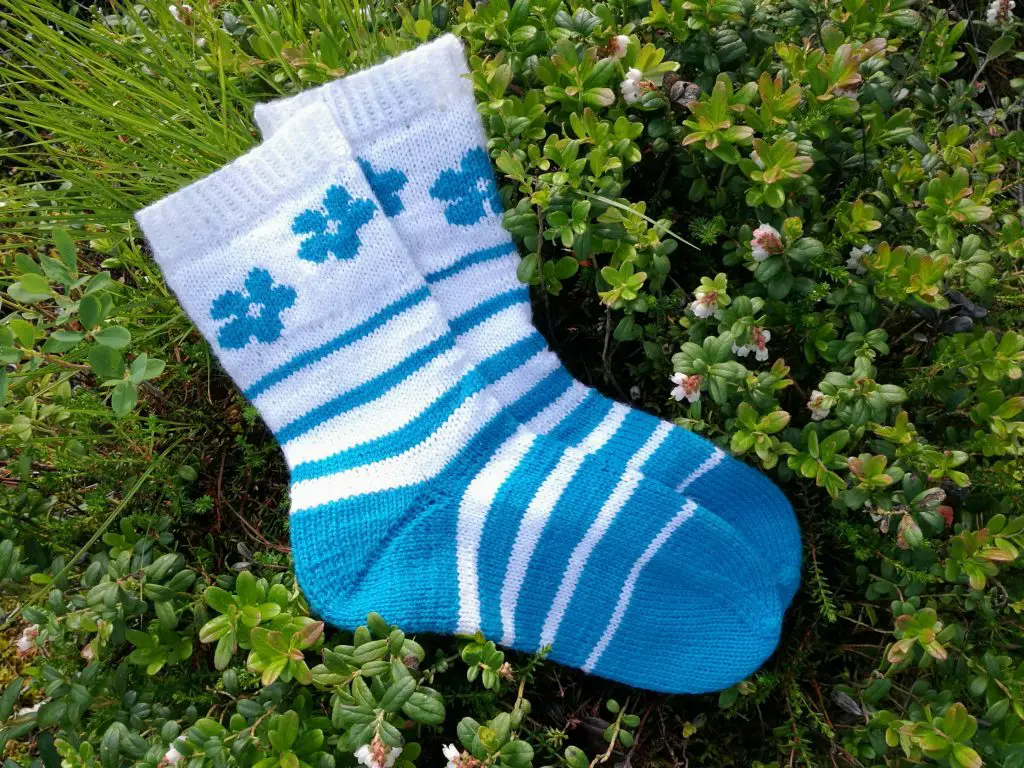
Afterthought heel is an ideal heel type for colorwork socks or socks knitted with self-striping yarn. It can be used also for the perfectly symmetrical contrasting color heel. Similarly to the short row heel, you make it exactly the same way regardless if you start your sock from toe or cuff.
This is probably the easiest heel pattern.
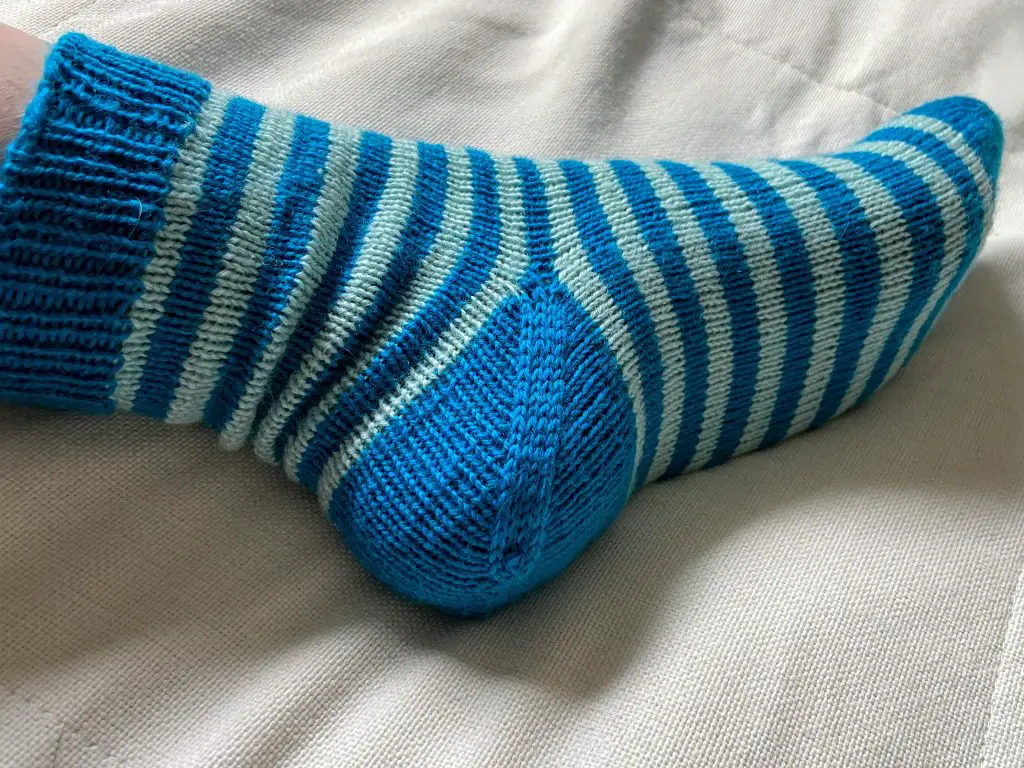
This heel should fit you well even if you have a high arch and at it stays on it’s place very well. However, this pattern is a bit more difficult than the previous two.
The pattern requires no picking up of stitches.
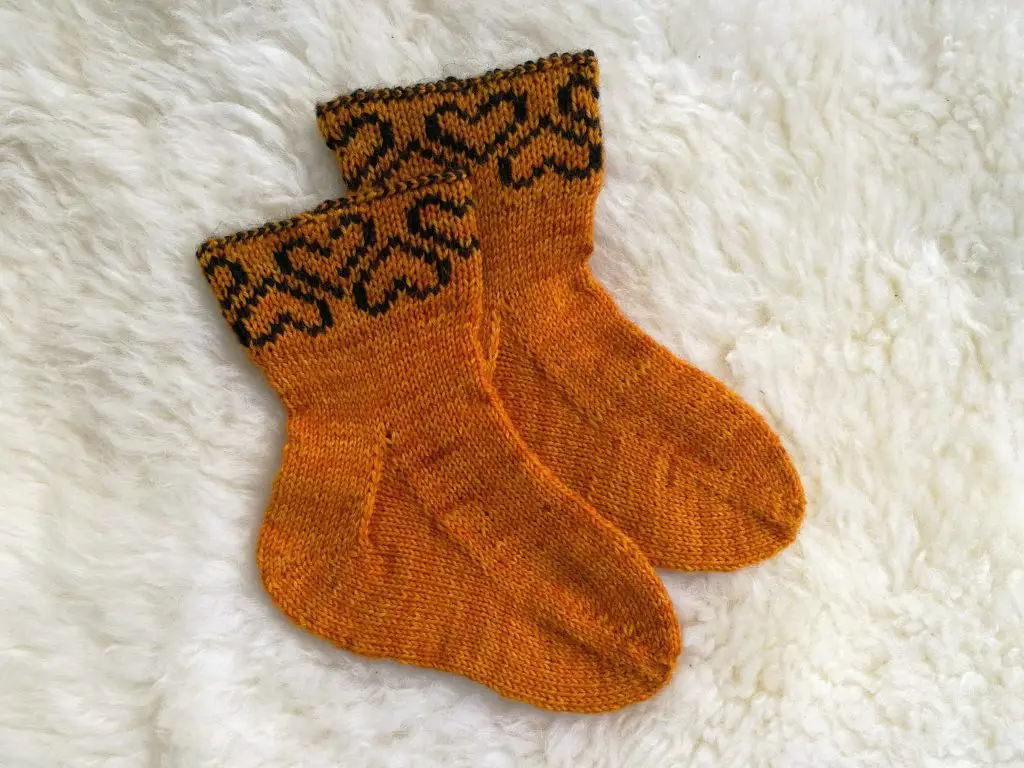
This heel is worked the same way as the plain flap and gusset heel but instead of stockinette the heel is worked with a slip stitch pattern in order to make it more durable.
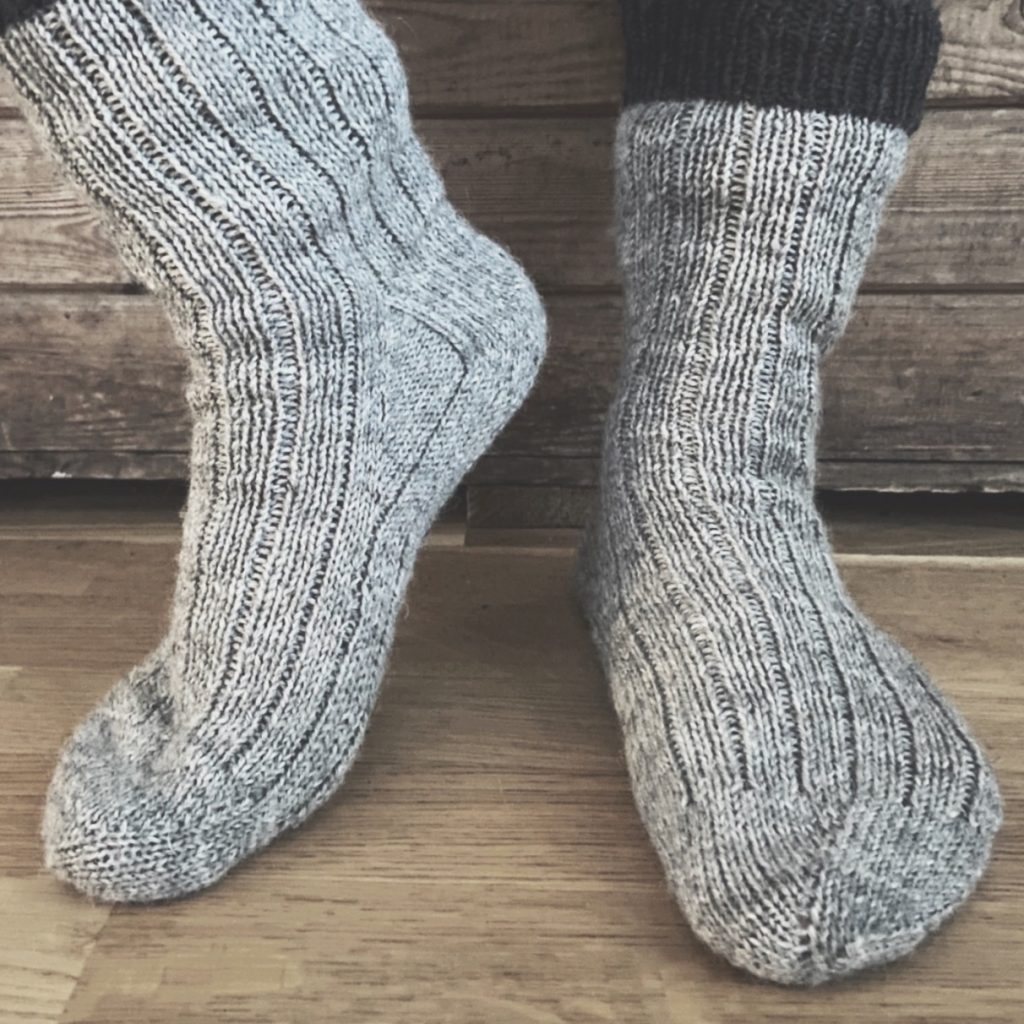
Now that you are finished with your heel work in the round until you reach the desired length for your leg. If you are gifting the socks you can check the typical sock lengths here.
Work at least 10 rows of either 1 by 1 or 2 by 2 ribbing on the cuff and then bind-off using a stretchy bind-off method.
Weave in ends and block your socks.
I would be happy to see your version! You can share it with me on Instagram by tagging me @knitgrammer or leaving a review with an image below.

I’m Ida a 30 something engineer living in Lapland, Finland. I love knitting and programming, hence the nickname Knitgrammer. In my blog you’ll find tools (knitting calculators and interactive patterns) which will save you some trouble and do the knitting math for you.
My design philosophy is to make simple, useful, and beautiful things. If I make something I (or my kids or husband) don’t enjoy wearing I won’t publish the pattern.
I’ll send you my top 5 tips of how to make a durable pair of socks.
Copyright © 2022 Knitgrammer
I’ll send you my top 5 tips of how to make a durable pair of socks.
10 reviews for Universal Basic Sock Pattern